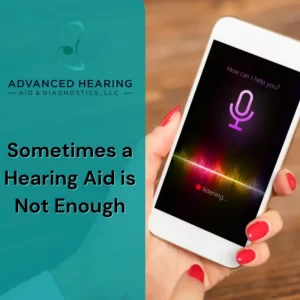
Some people think that once you start wearing a hearing aid, you’ll be able to hear anything, anywhere, and anytime. But this is not the case. A hearing aid is an aid, something to assist you to hear better. But in the end, it is an electronic device that is better than your unaided normal hearing, but far from normal hearing. There are times when a person with a hearing loss might need to use an Assistive Listening Device or ALD in addition to their hearing aid in order to hear clearly. In this discussion, we are going to introduce a few of the assistive listening devices available. This is not a comprehensive list, but an introduction to the most commonly used or available Assistive Listening Devices.
Bluetooth Streamer
- While some of the newer hearing aids have Bluetooth capabilities built into the aids, the vast majority do not. In order to access Bluetooth through the hearing aids to the telephone or other device, there has to be an intermediate device known as a streamer.
- The streamer allows you to talk hands-free on your cell phone, and listen to music, podcasts, or watch videos from your phone or other Bluetooth-compatible device.
Remote Microphone
- A remote microphone is a microphone you give to someone who is talking, like at a lecture, where the microphone is paired to your Bluetooth streamer or to your hearing aids.
- Now you can sit anywhere in the room and it is as if you are sitting right in front of the talker.
- This device reduces complications of environmental noise and speaker to listener distance.
TV Accessory
- An accessory for the TV would allow you to connect your hearing aids to the TV so that you could receive a signal directly from the TV into the hearing aids.
- Others in the room can set the TV volume where is it is comfortable for them and you can adjust your own volume so that you can hear the TV clearly.
Telecoil
- A telecoil is a different way of receiving a signal into the hearing aids. A telecoil was developed primarily for use with the telephone but is also used for listening in larger rooms. You can find them often in places like churches or meeting rooms.
- In this case, there is a microphone picking up the primary sound signal, which is sent to a transmitter. The is a wire or “loop” that runs around the perimeter of the room that sends out the sound signal using an electromagnetic field. As long as you are within the “loop” and either has a telecoil in your hearing aid or have an intermediate device that has a telecoil that can connect to your hearing aids, you pick up the signal from the loop.